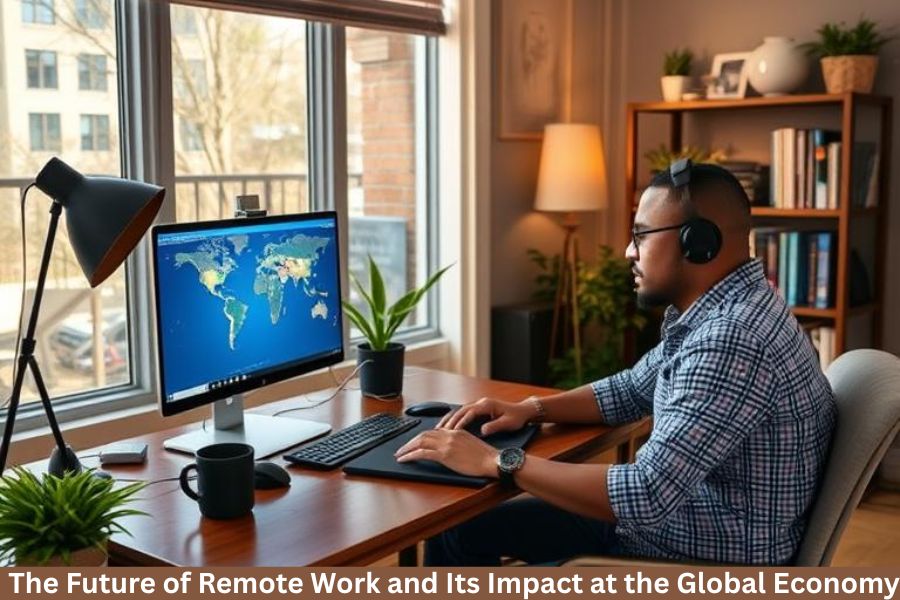Remote work has evolved from being an occasional perk to a mainstream running model. With the upward push of digital equipment and changing staff dynamics, the destiny of far flung paintings is a important topic with a purpose to shape industries and economies international. This article explores the tendencies, influences, and destiny expectations of far flung work.
What Is the Future of Remote Work?
The future of faraway paintings is predicted to be extra bendy, with a mix of completely far off and hybrid models. Many organizations are investing in digital infrastructure to assist remote groups, even as employees are stressful more manipulate over their paintings environments.
What Is Roam the Future of Remote Work?
“Roam” within the context of remote work refers back to the developing fashion of digital nomadism. More specialists are opting to work at the same time as travelling, leading groups to adopt vicinity-unbiased rules. This shift is supported by coworking areas, virtual collaboration equipment, and visa applications catering to far off workers.
What Is the Impact of Remote Work?
Remote work has extensively impacted international economies by way of reducing operational charges for companies, growing productivity, and reshaping job markets. However, it also affords demanding situations which include cybersecurity threats and difficulties in maintaining company tradition.
What Is Remote Future?
The far off destiny is a state of affairs wherein paintings is not constrained to conventional workplaces. Companies are implementing lengthy-term remote paintings guidelines, and industries like IT, advertising, and customer support are thriving in this model.
Why Is Remote Work a Trend?
Remote paintings is trending because of technological improvements, converting worker possibilities, and monetary benefits for groups. Businesses save on workplace charges, whilst personnel experience higher paintings-lifestyles balance and versatility.
The Shift in Workforce Preferences
Employees now prioritize task flexibility, with many who prefer faraway or hybrid roles. Work-life stability, intellectual health blessings, and autonomy are key drivers of this shift.
Technological Advancements Enabling Remote Work
Advancements in cloud computing, AI, and collaboration tools like Zoom and Slack have made far flung work seamless. Future technologies will similarly decorate productiveness and security in far off setups.
Global Economic Impact of Remote Work
Remote paintings has opened task possibilities worldwide, boosting the gig financial system and reducing geographical employment barriers. Countries with strong virtual infrastructures are benefiting the most.
Challenges of Remote Work for Businesses
While faraway paintings gives flexibility, agencies face demanding situations in tracking productivity, securing sensitive facts, and keeping group cohesion. Effective guidelines and technologies can help mitigate these problems.
Remote Work and Urbanization Trends
The decentralization of work is decreasing the want for workplace spaces in important cities, impacting real property markets. More specialists are relocating to suburban and rural areas.
Future of Hybrid Work Models
Hybrid paintings is emerging as a desired model, permitting personnel to split time between remote and workplace paintings. Companies are redesigning guidelines to aid this transition.
Global Perspectives on Remote Work
Different countries have varied processes to far flung paintings, with a few imparting tax incentives and virtual nomad visas to attract far flung professionals. Labor laws also are evolving to house this shift.
Sustainability and Remote Work
Remote work reduces commuting, main to decrease carbon emissions and energy savings. Businesses are investing in green projects to help sustainable work models.
Conclusion
The future of remote paintings is vibrant, with companies and employees embracing flexibility, technology, and sustainability. While demanding situations exist, far flung work is right here to live, shaping the worldwide financial system for future years.
FAQs
What industries advantage the maximum from far off work?
IT, advertising and marketing, customer support, and consulting are some of the top industries benefiting from far flung work.
How does far flung paintings have an effect on productiveness?
Studies show that far off paintings can boom productiveness, however it requires effective management and communication equipment.
Will far flung work replace conventional offices?
While remote paintings is growing, traditional places of work will continue to exist, with hybrid fashions becoming the norm.
What are the main challenges of far off paintings?
Key challenges encompass cybersecurity risks, retaining business enterprise subculture, and handling faraway teams successfully.
How can businesses prepare for a faraway future?
Companies should invest in digital gear, establish clear far flung work guidelines, and focus on employee engagement techniques.
